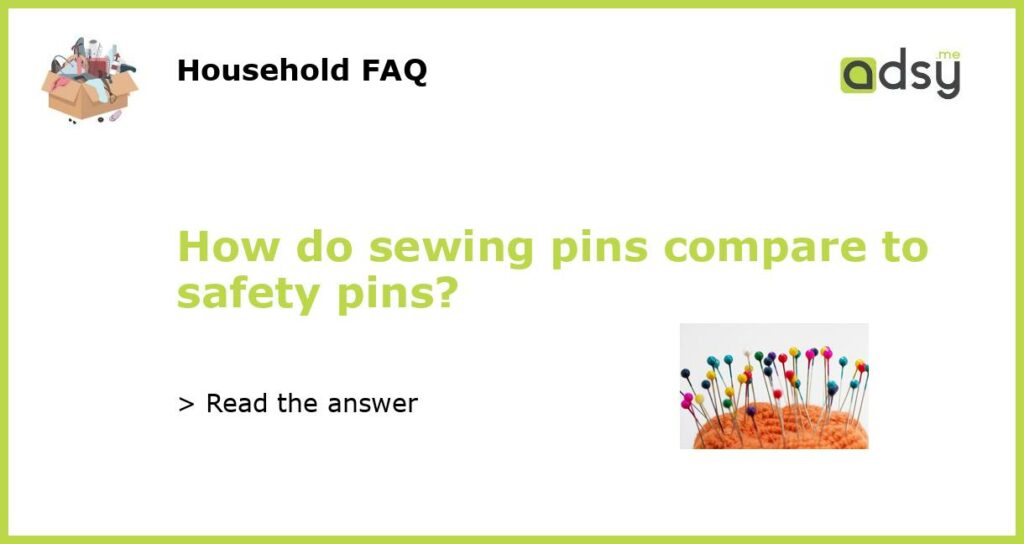Introduction
Sewing pins and safety pins are both common tools in the world of sewing and crafting, but they serve different purposes. While sewing pins are primarily used to temporarily hold fabric pieces together during the sewing process, safety pins are designed for more practical uses, such as fastening clothing or securing items together. In this article, we will compare sewing pins and safety pins in terms of functionality, ease of use, versatility, and safety.
Functionality
Sewing pins are thin, sharp, and typically made of stainless steel. They have a small ball or ornament at one end and a sharp point at the other. These pins are designed to hold fabric pieces together while sewing, allowing the user to adjust the fabric as needed before permanently stitching it. Sewing pins are perfect for tasks like pinning pattern pieces onto fabric, securing hems, or keeping fabric layers in place.
On the other hand, safety pins are sturdier and stronger than sewing pins. They are made of thick metal with a clasp or lever mechanism at one end. Safety pins are not specifically designed for sewing tasks but are more practical for holding clothing together or securing items. They are commonly used for fastening clothes, attaching badges or brooches, or temporarily fixing household items.
Ease of Use
Sewing pins are relatively easy to handle and use. Their sharp point allows for easy insertion into fabric layers, and the ball or ornament at the other end provides a firm grip for the user’s fingers. When using sewing pins, it’s important to be cautious of the sharp point to avoid accidental pricks. However, with the right technique, they can be easily removed without causing damage to the fabric.
Safety pins, on the other hand, require slightly more effort to use. The lever or clasp mechanism can be a bit tricky to open and close, especially for people with limited hand dexterity. On the plus side, safety pins can be easily attached and detached, making them convenient for tasks that require frequent opening and closing, such as securing diapers or temporarily fixing broken straps.
Versatility
Sewing pins are mainly used in sewing and crafting projects. They come in various lengths and thicknesses, allowing users to choose the most suitable pin for their specific task. Sewing pins are also handy for pinning fabric layers, attaching trims or lace, or creating pleats. They are an essential tool for any sewing enthusiast and are commonly found in sewing kits or boxes.
On the other hand, safety pins are incredibly versatile and have a wide range of practical uses beyond sewing. They can be used to fasten clothing, secure loose buttons, create temporary repairs, or even serve as a makeshift zipper pull. Safety pins are often included in emergency or survival kits due to their usefulness in various situations. They are also commonly used in fashion design, jewelry making, and even as accessories in punk or alternative fashion styles.
Safety Considerations
When it comes to safety, sewing pins can pose a greater risk of accidental pricks and injuries due to their sharp points. However, with proper handling and caution, the risk can be minimized. It is essential to store sewing pins properly, away from the reach of children, and always discard bent or damaged pins to prevent accidents.
Safety pins, on the other hand, have a lower risk of causing injuries as they have a clasp or lever mechanism that can be easily closed. However, there is still a possibility of pinching or snagging the skin if not handled correctly. Additionally, larger safety pins should be used with caution to avoid any risks of puncturing or damaging delicate fabrics.
In conclusion, sewing pins and safety pins have different functionalities, ease of use, versatility, and safety considerations. Sewing pins are ideal for holding fabric layers together during sewing projects, while safety pins are more practical for fastening clothing or securing items. Depending on the specific tasks at hand, both types of pins can be valuable tools for sewing enthusiasts and crafters. It’s important to use them safely, store them properly, and always choose the most appropriate pin for the task at hand.






